Sowing Seed
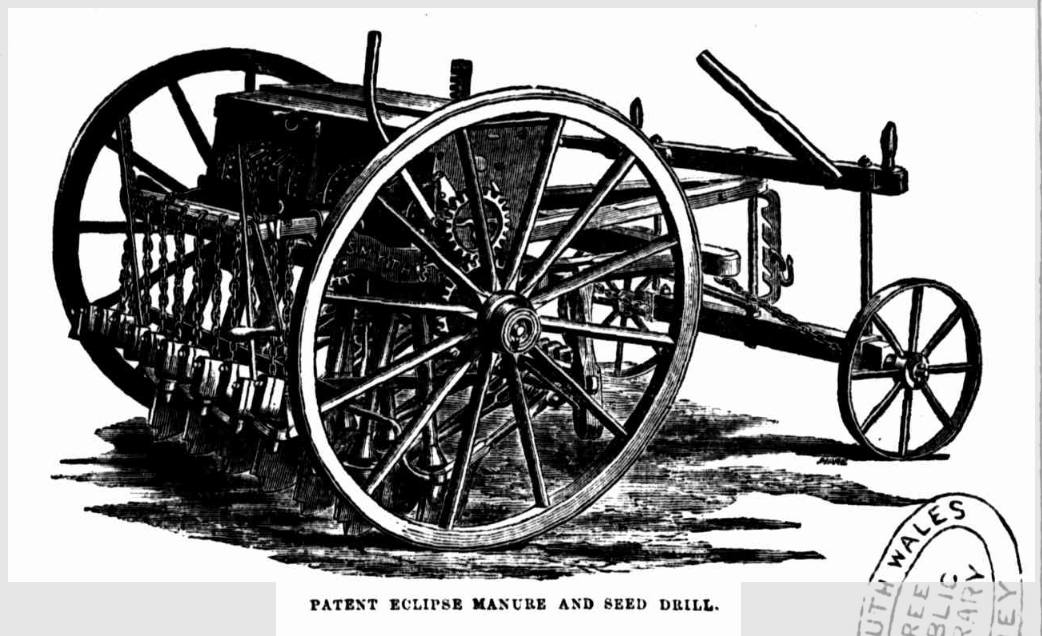
From Waler Data Base @ FaceBook. Image: Sydney Mail & NSW Advertiser, 4th September 1875.
Sowing seed… in colonial days grain was sowed by scattering – usually by hand, but many ingenious horse drawn broadcasters were also made. People knew to nourish soil, so some seed scatterers also threw fertiliser about. Harrows came along after them, and covered it all.
Then basic seed drills were invented. Some towed harrows behind, some had inbuilt plough shares or horse hoes to cover the grain. Nek minnit, they realised they could mix fertiliser with the seed and sow the lot at once, saving another trip around the paddock.
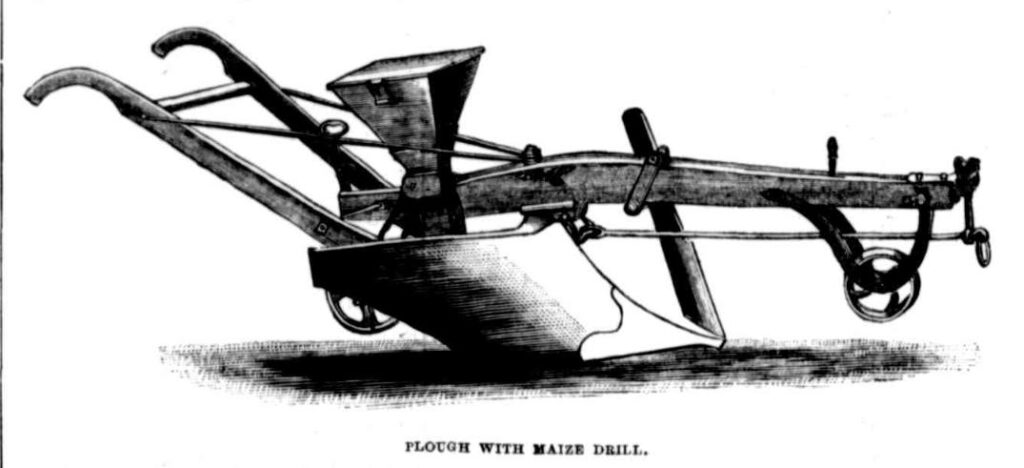
The seed container was attached to an Eagle 75 plough. Anything from maize to peas to wheat could be sowed and ploughed straight in, as this stopped birds grabbing the seed, which happened a lot with broadcast seeds before they could be covered. These were also imported. There was a notched roller to measure how often a seed was dropped.
Image: Australian Town & Country Journal, 1st September 1884
The Champion seed drill was imported in 1888 and much praised in the papers. It could sow grass seed through to wheat, all sizes of seed and grain. They were being used with success in New Zealand then too. Manure (fertiliser) could also be sowed with the grain, usually premixed.
Illustration from The Australasian, 1st September, 1888
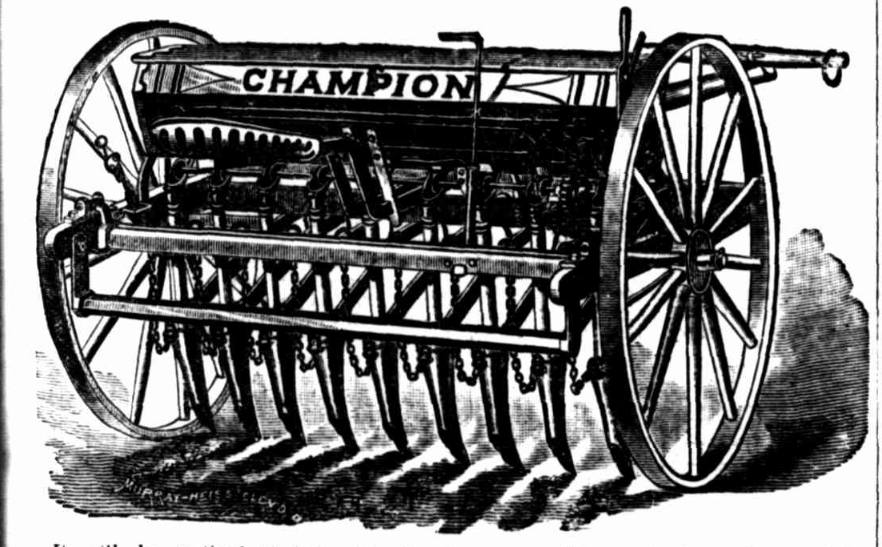
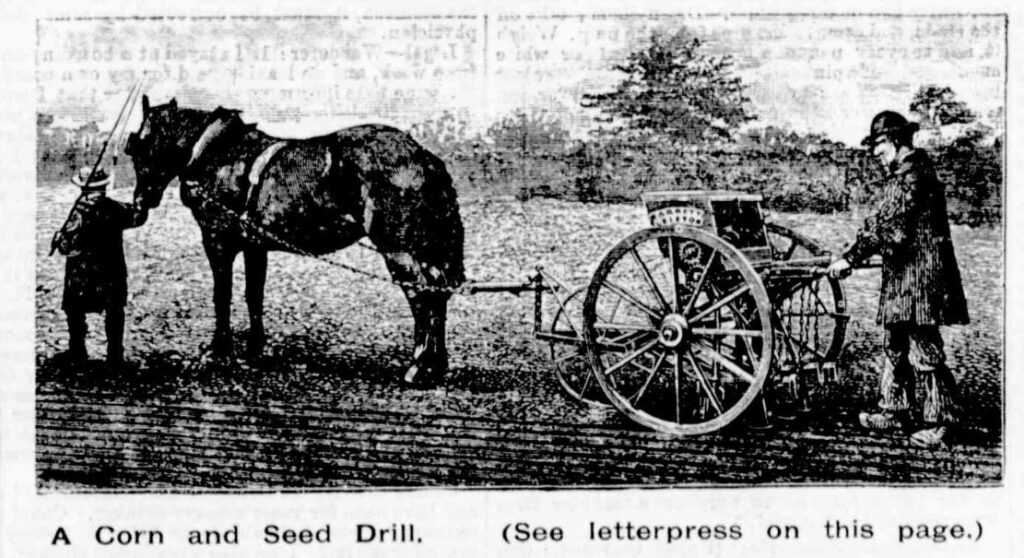
Corn and seed drill. Designed for small holdings and orchards, it could also sow fine seed such as grass and lucerne, through to grains and maize (corn). Illustration from the Australian Town & Country, 1st September 1888
While some people used a cart or wagon to take composted stable manure and seaweed to paddocks to plough in, obviously broadacre properties needed something easier and faster to fertilise. Fertiliser was mixed in bags and stored ahead of time – keeping it dry was critical. Some was mixed as sowing took place, in the seed container on the implement, before setting out. Both fertiliser and grain went down the same tube of early drills.
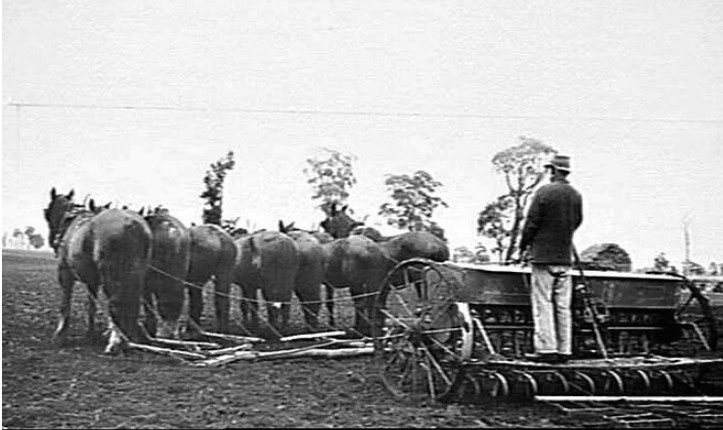
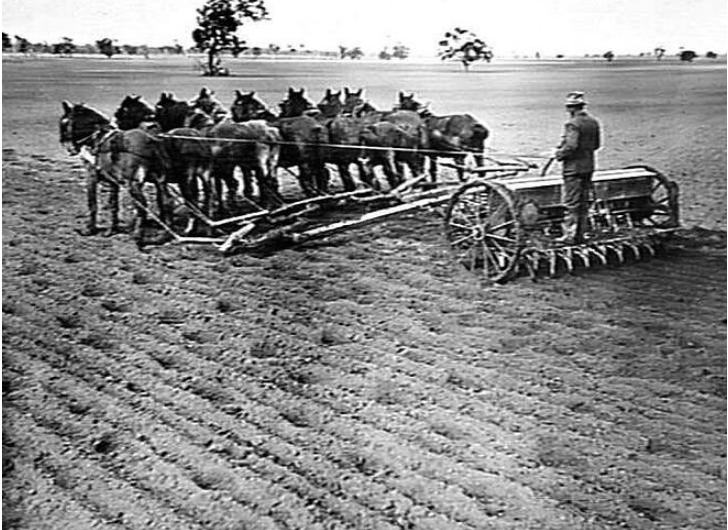
Museums Victoria images: 7-abreast team pulling a spring tyne grain and fertilizer drill with covering-harrows following. 1920-30. H.V. McKay Sunshine Collection.; A 9-horse team abreast pulling an H.V. McKay 16 row ‘Suntyne’ seed drill in muddy conditions, Natimuk, Victoria, June 1938.
Fertiliser wasn’t the pelletised form we know today – it varied, whatever was available – bone dust (N-P-K rating of 3–15–0, with a calcium content of around 12%, needs acidic soil or microbes to break it down), guano (bird poop collected on offshore islands – nitrogen 11 to 16 percent, phosphoric acid 8 to 12 percent, potash content 2 to 3 percent ), nitrate of soda also known as Chile saltpetre (N 15-16%.), salt, wood ash, calcified lime, sulphate of ammonia, sheep manure from shearing sheds, stable and dairy manure treated with sulphuric acid (this drops ammonia content, makes nitrogen and phosphorus available) and dried to scatter, and so on.
Then along came superphosphate! Seed drills back then were mostly all imported, heavy and very expensive. Even into the 1890’s people discussed the virtues of broadcasting versus drilling seed, but drilling was more efficient – the crop emerged at a uniform height and 10 lb (4.5k) of grain per acre saved.
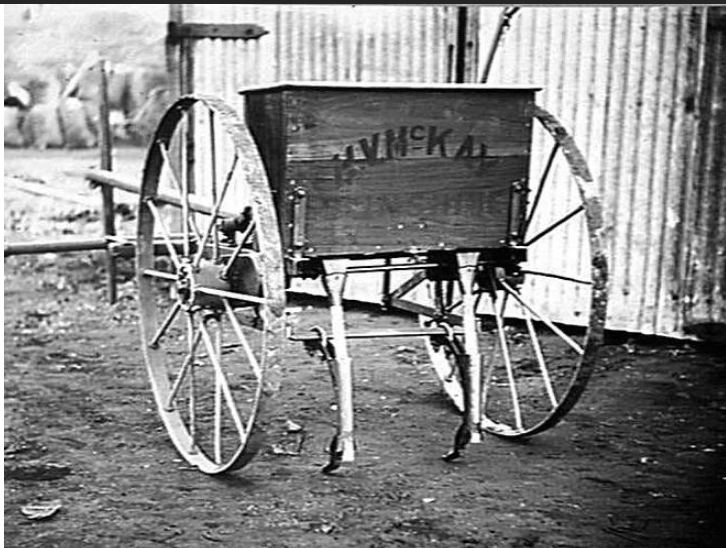
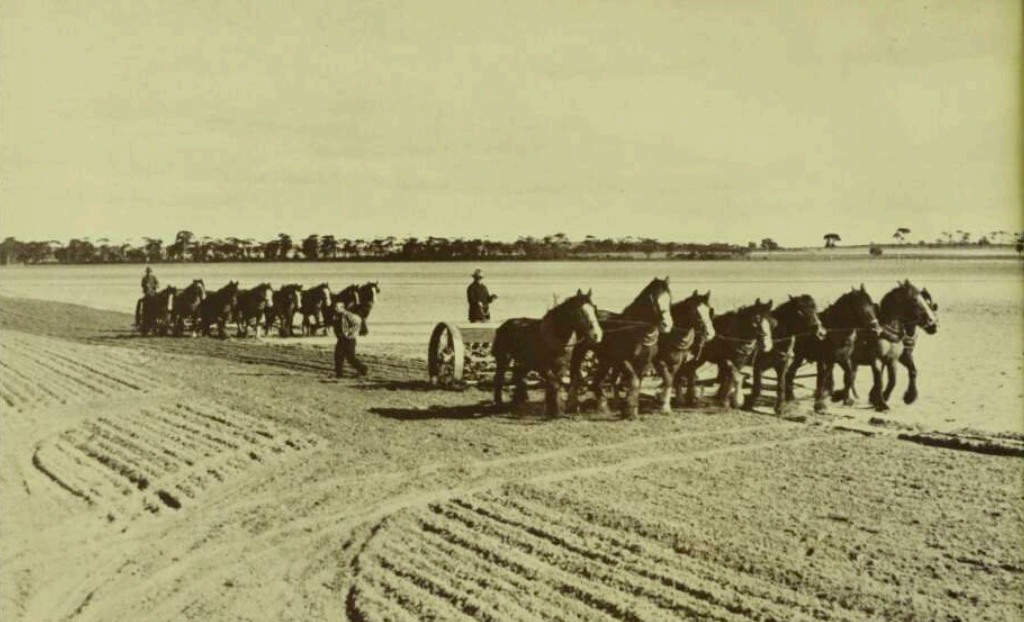
Images: Early horse-drawn H.V. McKay 2-row fertilizer drill, for use in vineyards, Museums Vic; Eight horse teams hauling seed drills in Western Australia, Walkabout, 1st November 1937
When the new wonder of super came on the scene, people mixed it in the bag with the grain or small seed (such as canola and lucerne). However the slightest bit of moisture killed most seed viabilty, and worse, storing it pre-mixed caused massive losses. Many giant areas had to be re-sowed.
Many people about this time – 1890’s – invented seed drills here and made them. Our government farms and Ag. Departments were busy experimenting – soon proving mixing grain and super ahead was no good, and trying to find a solution. They found super had to be very dry and mixed with grain the day it was used. Before long another problem arose – it was obvious super and grain had to be put down separately on the paddock, as when both went down the tubes from the drill together, the super could burn the sprouting seed. So this doubled the work load for many. Seed was usually mixed with sand or sawdust to help it flow and not sow too thickly, but on the old machines clogging was frequent.
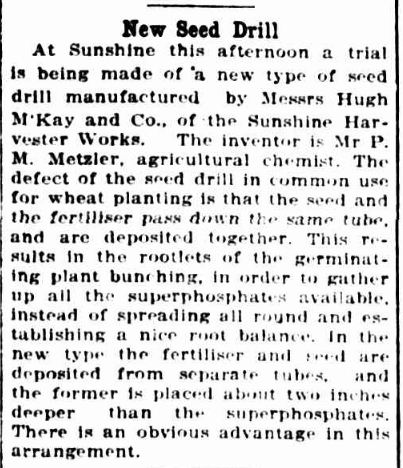
Meanwhile, Hugh McKay was busy setting up his agricultural machinery works, making implements that were affordable. Then Mr P.M. Metzler, an agricultural chemist – who incidentally had found naturally occurring phosphates in NSW too – invented a combined seed and fertiliser drill called the Duplex. Yay! These type of implements had been used with success in the USA.
The seeds went down their own tubes to a shallow depth, and the fertiliser (superphosphate) went down separate tubes to be buried more deeply. Hugh McKay took on the design and set about making them. Success!
Image: Herald, 2nd April, 1910.
Fertiliser is more often called manure in old news articles actually, both items include superphosphate. These seed and fertiliser drills could also be used for the other traditional fertilisers as long as it was dry and fine enough to pass through the tubes. Moisture could cause blockages, and it was imperative to clear the seed and fertiliser drill for overnight.
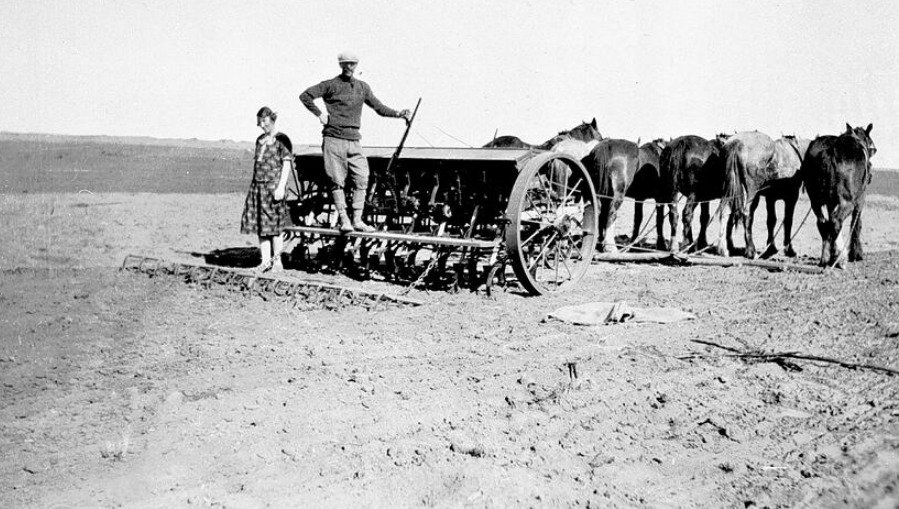
It has two boxes, one in front for seed and one at the rear for superphosphate, ingenious!